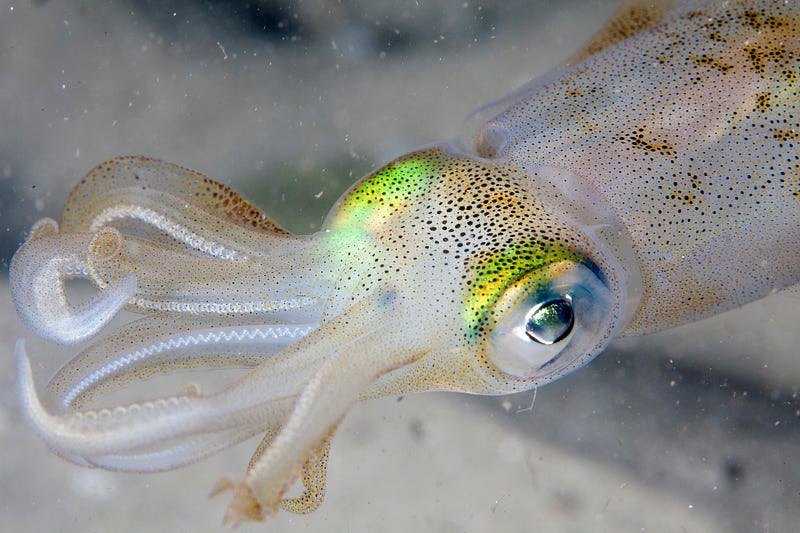Innovative Technologies Inspired by Nature's Genius
Written on
Chapter 1: Nature's Influence on Modern Technology
Nature has long served as a muse for technological advancements, showcasing remarkable examples of innovation. For instance, there are paints that replicate the waxy texture of a lotus leaf, effectively repelling water and dirt. The aerodynamic design of Japan's bullet trains, which minimizes sonic booms upon entering tunnels, draws inspiration from the kingfisher's beak. One of the most recognized innovations inspired by nature is Velcro, created by a man intrigued by how cockle burrs clung to his dog's fur during walks.
Velcro emerged before the 1960s, while superhydrophobic surfaces inspired by lotus leaves have been around since 2005. Though biomimetic materials are not a recent phenomenon, fresh inventions continue to surface. A notable recent advancement is adaptive insulation modeled after the color-changing abilities of squid skin. A research study published in March 2022 discusses potential applications for food packaging.

Squids possess the ability to change color, a trait that has inspired innovative thermal insulation materials (image by Klaus Stiefel via flikr.com CC BY-NC 2.0). Squid skin is transparent but contains colored cells called chromatophores. By contracting their muscles, squids can manipulate these chromatophores, making them expand and change color. Scientists at the University of California have developed insulation based on this principle, utilizing a stretchy polymer, SEBS block copolymer, combined with copper flakes that anchor themselves in the polymer via nanoscale columns.
When applied to a coffee cup, this advanced insulation demonstrated a remarkable capability, taking 90 minutes for the coffee to reach ambient temperature. In contrast, a cup wrapped solely in the stretchy polymer—lacking insulation—cooled much more rapidly.
When the composite material is stretched, the copper flakes separate, creating gaps that facilitate heat loss. By adjusting the level of strain applied, researchers can control the insulation properties of the material. This means you could dictate how quickly your coffee cools, but what implications does this have?
The research team has also explored how to dispose of this composite material. The copper can be removed using a mild acid like vinegar, while the polymer can be recycled with other plastics. However, this recycling method raises concerns. In the UK, there's a tradition of enjoying takeaway chips drizzled with vinegar. The last thing anyone wants is for their food container to dissolve into their meal. Given that the copper coating is only 20 nm thick, and with 90 nm copper columns extending into the polymer, the amount ingested likely won’t pose a health risk. Yet, some individuals have copper allergies, and vinegar could degrade the desirable properties of this engineered material. Thus, complete encapsulation of the copper within the polymer might be necessary, though this could complicate recycling efforts.
Applying this technology to food packaging represents a novel use for a concept developed years ago. In 2019, the same research team shared findings on the squid-skin-inspired material’s effectiveness at keeping individuals warm.
Ensuring warmth appears to be a far nobler goal than just insulating takeaway food and beverages. With energy costs soaring in the UK and heating contributing significantly to carbon dioxide emissions, there are compelling reasons to explore insulating materials. The wearable insulation was based on space blankets commonly used by runners after races or carried by outdoor enthusiasts for emergencies.
In their study, the heat-reflective properties of a custom sleeve made from this squid-skin-inspired material could be adjusted by tightening it with Velcro-style fasteners. Without tension, the sleeve maintained warmth at approximately 14 degrees Celsius. Stretching the material reduced its insulating capabilities, allowing comfort at nearly 22 degrees Celsius. Thus, the material can function dynamically as a space blanket, synthetic fleece, wool, or cotton. One can envision a future where molecular-scale motors within the fabric automatically apply strain. However, the SEBS block copolymer might lead to perspiration, suggesting the need for tiny pores, similar to those found in Gore-Tex, to allow for breathability while maintaining heat retention.
The ingenuity displayed by material scientists in creating new substances, coupled with the creativity to draw inspiration from nature, is truly remarkable. Mimicking nature’s long-evolved adaptations seems a logical approach, as the intricate plant and animal adaptations honed over billions of years can be advantageous for human innovation.
Chapter 2: Exploring Nature-Inspired Innovations
The first video, "8 Useful Technologies Inspired by Nature," dives into various innovations that draw inspiration from the natural world, highlighting how these designs enhance efficiency and sustainability.
The second video, "Discovering Nature-Inspired Innovation with Science Journalist Kristy Hamilton," features a discussion on the intersection of nature and technology, showcasing the creative processes behind these groundbreaking ideas.
About This Story
This narrative is inspired by a conversation from the podcast "Technically Speaking," which features lively discussions on science and engineering, blending factual insights with imaginative speculation and cultural references. New episodes are released bi-weekly on platforms such as Apple, Spotify, Amazon Music, Google, Podbean, and more. Follow the podcast on Twitter to join the conversation!